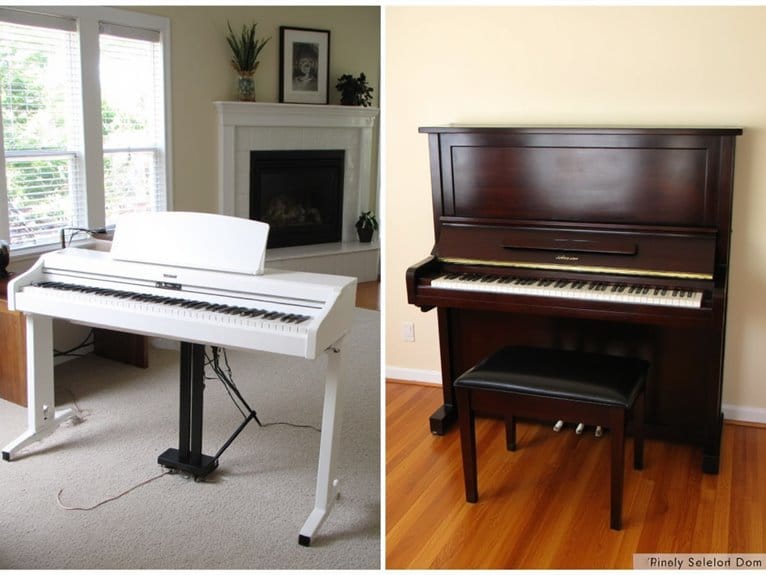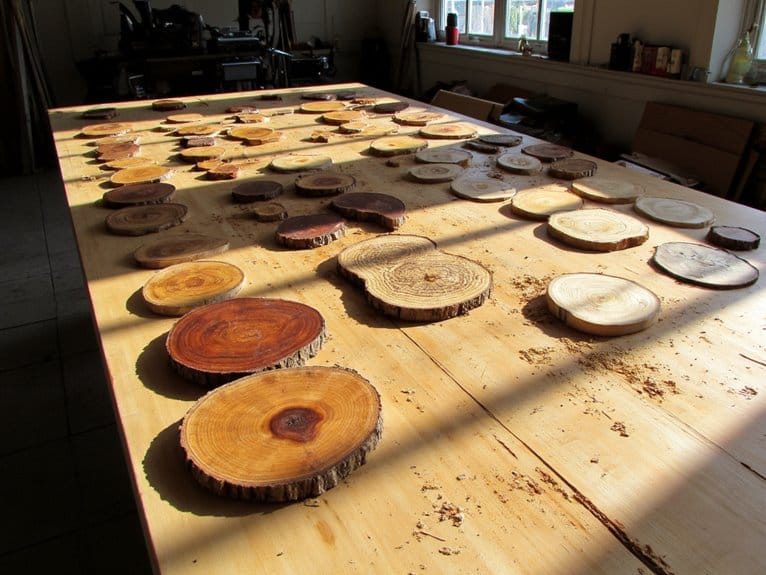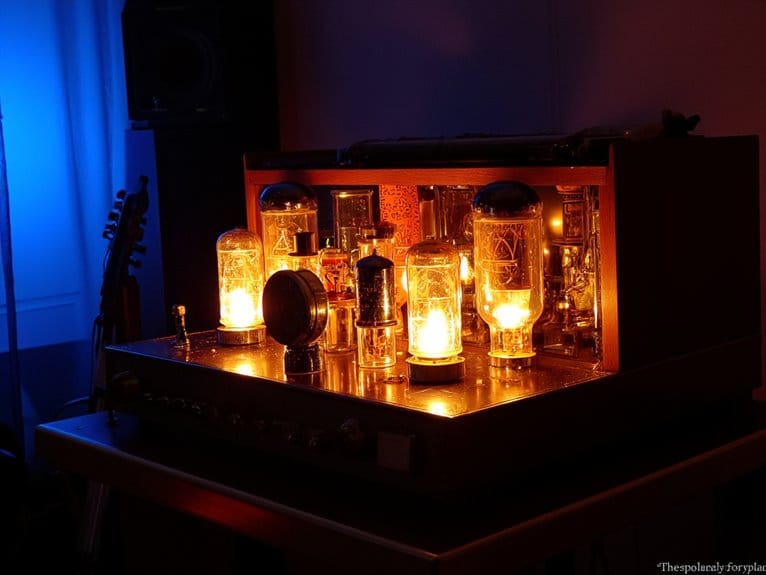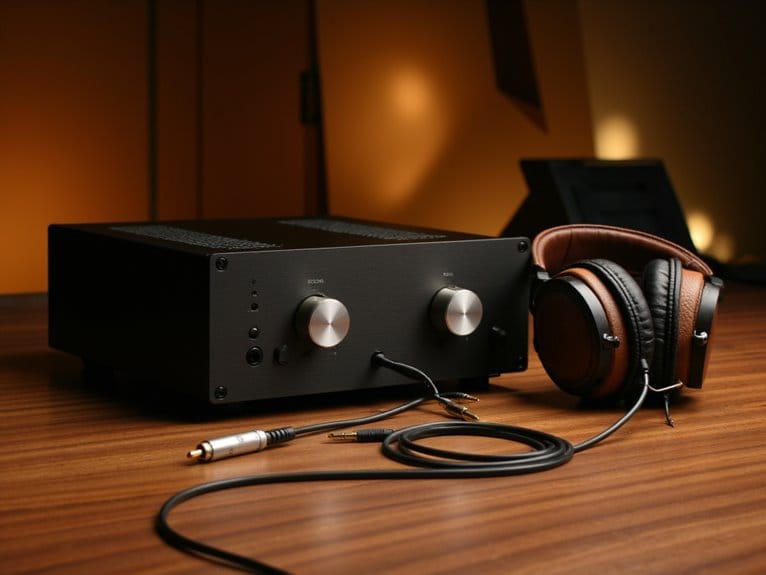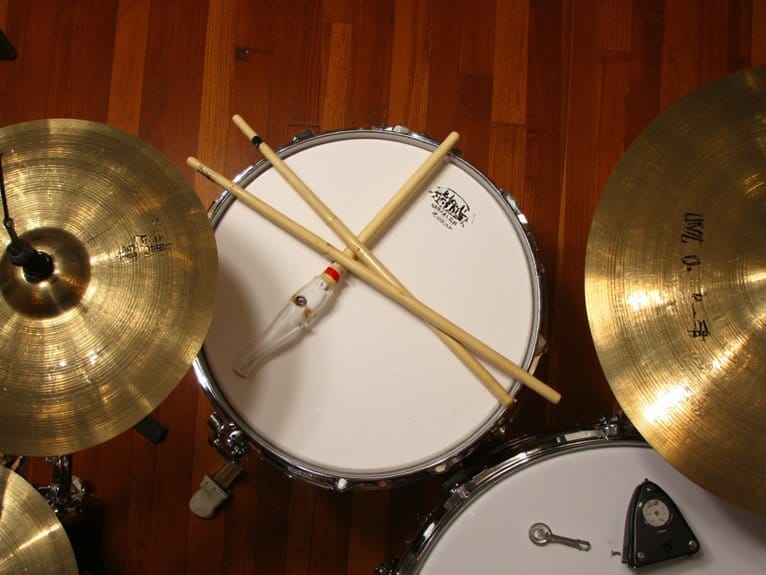Portable Vs Cabinet-Style Digital Pianos: Pros and Cons
You’ll find portable digital pianos weighing 20-30 pounds offer unmatched mobility and battery power for gigs, while cabinet-style models exceeding 70 pounds provide superior touch response with authentic hammer actions and better speaker systems. Portable options start around $499 with decent polyphony, whereas cabinet pianos begin near $1200 but deliver genuine acoustic simulation. Your choice depends on whether you prioritize convenience for traveling or acoustic authenticity for serious practice, and there’s more beneath these surface considerations.
We are supported by our audience. When you purchase through links on our site, we may earn an affiliate commission, at no extra cost for you. Learn more.
Notable Insights
- Portable models weigh 20-30 pounds for easy transport, while cabinet-style pianos exceed 70 pounds requiring assistance to move.
- Cabinet pianos offer superior touch response with authentic hammer actions and better speaker systems, while portables use simplified actions.
- Portable pianos start around $499-$649 providing excellent value, whereas cabinet models begin near $1200 reflecting premium build quality.
- Cabinet-style pianos feature traditional wooden furniture aesthetics, while portable models embrace minimalist designs under 15 cm thick.
- Portable models suit traveling musicians and small spaces with battery power, while cabinet pianos serve serious players preferring acoustic replication.
Portability and Mobility Considerations
When you’re weighing the decision between portable and cabinet-style digital pianos, I’ve found that mobility considerations often become the deciding factor for most musicians.
Portable models, typically weighing 20-30 pounds, offer exceptional transport ease that you can manage single-handedly, while cabinet-style units exceeding 70 pounds require assistance and careful planning for relocation.
The weight difference between portable and cabinet pianos directly determines whether you’ll need help moving your instrument.
The compact storage advantage of portables becomes immediately apparent in apartments, dorms, or shared spaces where every square foot matters.
I’ve noticed that portable pianos’ slim form factor, often enhanced by foldable designs or carrying cases, enables spontaneous practice sessions across multiple locations. Many portable digital pianos include built-in speakers or headphone support for quiet practice, making them ideal for musicians who need to practice without disturbing others. For true portability, some models can operate on battery power for up to 8 hours, eliminating the need for power outlets during outdoor performances or remote practice sessions.
Cabinet-style pianos, though offering superior stability and integrated components, fundamentally commit you to a permanent setup that restricts your musical flexibility to one dedicated space. However, this lightweight design compromise may affect the overall perception of quality and robustness compared to heavier cabinet models. Modern portable pianos often feature USB connectivity similar to audio interfaces, enabling seamless integration with recording software and computers for enhanced functionality. When connecting to recording equipment, pairing with a quality audio interface ensures professional-grade sound capture for studio work.
Design and Aesthetic Differences
When you’re choosing between these piano styles, you’ll notice that cabinet models embody traditional furniture aesthetics with their substantial wooden construction, rich finishes, and classic upright piano silhouette that commands attention in any room.
Portable digital pianos, in contrast, embrace minimalist design principles with sleek, compact profiles that prioritize functionality over ornamental appeal, making them ideal for contemporary spaces or situations where visual subtlety matters. The integrated speaker system within portable models eliminates the need for external housing, contributing to their streamlined appearance.
Your decision ultimately hinges on whether you want a statement piece that integrates seamlessly with formal home decor, or a versatile instrument that adapts to multiple environments without dominating your living space.
Furniture-Like Cabinet Aesthetics
The mahogany finish catches your eye first—that’s exactly what cabinet-style digital piano manufacturers are banking on when they design these instruments to double as living room furniture.
I’ve noticed how these pianos feature elegant curves reminiscent of traditional uprights, complete with sophisticated textures that transform your practice space into something resembling a concert hall.
You’ll find warm wooden composites with hand-polished surfaces, soft-fall lids that close with satisfying precision, and streamlined front legs that elevate the visual appeal beyond typical rectangular digital models.
Unlike portable keyboards that scream “electronic instrument,” cabinet styles integrate seamlessly into home décor with finishing options spanning classic black, pristine white, and natural wood tones that complement existing furniture while maintaining authentic piano proportions.
Just as acoustic guitar manufacturers like Yamaha understand that tonal wood selection significantly impacts both sound quality and aesthetic appeal, digital piano makers recognize that cabinet finishes serve dual purposes—enhancing visual integration while potentially influencing the instrument’s acoustic resonance properties.
Minimalist Portable Design
While cabinet-style pianos command attention through their traditional grandeur, portable digital pianos take the opposite approach by embracing minimalist design principles that prioritize function over visual presence.
You’ll find these instruments feature slim profiles under 15 cm thick, weighing less than 11 kg for effortless transport. Their minimalist features include clean surfaces with matte finishes, neutral color schemes, and simplified control panels that reduce visual clutter while maintaining essential functionality.
The compact functionality shines through detachable music stands, flat key covers that double as surfaces, and discreet connectivity ports that preserve sleek aesthetics. Models like the Kawai ES120 exemplify this philosophy, delivering full 88-key layouts without sacrificing portability or overwhelming your living space with traditional piano bulk.
Many portable keyboards under $500 offer dual power options that enhance their minimalist appeal by eliminating bulky cords when running on battery power.
Home Decor Integration
Beyond their functional differences, cabinet-style and portable digital pianos create dramatically different visual impacts in your living space, with each category serving distinct decorating philosophies and lifestyle needs.
Cabinet models function as statement furniture pieces, featuring polished wood finishes like ebony or walnut that enhance color coordination with existing décor, while portable units prioritize minimalist aesthetics that adapt to various room layouts.
Here’s how each style affects your home’s visual harmony:
- Cabinet pianos offer sophisticated elements like curved lids and ornate legs that create decor synergy with formal interiors.
- Portable models feature clean lines and neutral finishes that complement contemporary, multipurpose spaces.
- Placement flexibility differs greatly, with cabinets anchoring room designs versus portables supporting versatile arrangements.
Your choice ultimately determines whether the instrument becomes your home’s artistic centerpiece or blends seamlessly into modern living.
Key Action and Touch Response Quality
Touch sensitivity remains the cornerstone of digital piano performance, and I’ve found that the difference between portable and cabinet-style instruments becomes immediately apparent the moment your fingers contact the keys.
Cabinet-style models typically feature fully hammer-weighted actions with triple-sensor technology, delivering superior key sensitivity that captures nuanced dynamics and rapid note repetitions. The action mechanics in these instruments often include graded hammer weighting, synthetic ivory surfaces, and longer wooden key sticks that replicate acoustic piano feel.
Portable models, while improving dramatically, usually employ semi-weighted or simplified hammer actions with fewer sensors, resulting in less refined touch response. You’ll notice cabinet pianos offer more authentic resistance levels and tactile feedback, though quality portable instruments can still provide satisfying playing experiences for most musicians.
Sound Quality and Speaker Performance
When you’re comparing portable and cabinet-style digital pianos, the built-in speaker systems represent one of the most significant differences you’ll encounter, with portable models typically offering 16-40 watts of power while cabinet styles often exceed this range for enhanced room-filling capabilities.
The sound engine technology varies considerably between these formats, as portable units prioritize clarity and spatial effects like 3D surround sound to compensate for smaller speaker enclosures, whereas cabinet models leverage larger internal resonance chambers and multiple drivers to create more natural acoustic simulation.
Your external amplification needs will largely depend on your intended use and room size, since portable pianos excel with headphones and small spaces but may require additional speakers for performances, while cabinet-style instruments generally provide sufficient power for most home environments without external enhancement.
Built-in Speaker Power
One fundamental difference I’ve noticed between portable and cabinet-style digital pianos lies in their built-in speaker systems, which dramatically affects your playing experience and determines whether you’ll need additional equipment for satisfying sound reproduction.
Speaker wattage becomes significant when you’re considering room size and performance needs. Cabinet pianos typically deliver 12W–20W total power, while portable models often settle for 6W per speaker, limiting their volume capabilities and sound immersion potential.
Here’s what you should expect from each style:
- Portable models excel in mobility but require external amplification for venues larger than small practice rooms.
- Cabinet pianos provide satisfying sound without additional gear, making them ideal for home studios.
- Higher wattage systems above 20W facilitate clearer dynamics and better bass response in medium-sized spaces.
Sound Engine Technology
While speaker power determines how loudly your digital piano can project sound, the sound engine technology working behind those speakers ultimately defines what you’ll actually hear when you press the keys.
Portable models typically use sample based engines, which rely on recordings of real pianos to reproduce sound, though their quality varies considerably across price points.
Cabinet-style pianos often feature advanced modeling engines that recreate piano sounds in real-time, or hybrid technology that combines sampling with synthesis for superior tonal authenticity.
These sophisticated systems, powered by innovative designs and fully digital circuits, deliver enhanced sound clarity and dynamic expression that responds naturally to your playing style, creating the realistic harmonic content and sympathetic resonance that makes expensive digital pianos worth their premium pricing. The complexity of your musical performance will benefit from higher polyphony options that support intricate passages without note dropouts.
For optimal performance when recording your digital piano, connecting to a quality audio interface can minimize latency issues and ensure the true sound character reaches your recording software without delay.
External Amplification Needs
Beyond the sophisticated sound engines that generate your digital piano‘s tones, the speakers and amplification systems that deliver those sounds to your ears play an equally essential role in determining your overall playing experience.
Cabinet-style digital pianos typically include premium speakers ranging from 12-20W total power, providing excellent sound projection through advanced soundboard technology that creates natural, 360° sound fields.
Portable models, however, often feature smaller speakers that struggle with bass response and volume in larger spaces.
Here’s what you’ll need to take into account for external amplification:
- Keyboard amplifiers offer the most accurate tonal reproduction for performances.
- Powered PA speakers deliver high volume but require additional setup knowledge.
- Guitar amplifiers work as alternatives though they may color your sound.
Portable pianos benefit greatly more from external amplification given their inherently limited onboard speaker capabilities.
Price Range and Value Comparison
Budget considerations often determine which type of digital piano you’ll ultimately choose, and I’ve found that the price gap between portable and cabinet-style models reflects more than just aesthetic differences.
Entry-level portables like the Korg B2 start around $499-$649, while cabinet models begin near $1200, with the Yamaha YDP-145 priced at $1299. This cost efficiency makes portables attractive for musicians prioritizing mobility without sacrificing weighted keys in the sub-$1000 range.
Portable digital pianos offer exceptional value under $1000, delivering weighted keys and mobility that cabinet models can’t match at twice the price.
Cabinet pianos justify their premium through heavier graded hammer actions, better speaker systems with 16+ watts of power, and built-in furniture stands with triple pedal units. Many budget-friendly portable options offer 128-note polyphony and comprehensive connectivity features that rival more expensive cabinet models.
While brand reputation influences pricing across both categories, I’ve noticed that portable models around $600-$1000 deliver remarkable value for their price-to-portability ratio.
Portable options like the Yamaha P71 at 25 pounds offer full-sized 88-key functionality with touch-sensitive keys and sustain pedal connectivity for under $500.
Ideal Use Cases and Target Musicians
Understanding your specific musical needs and lifestyle will guide you toward the right digital piano choice, as I’ve learned that each type serves distinctly distinctly different player profiles and musical situations.
Portable models excel for traveling musicians, space-constrained beginners, and contemporary performers who need battery-powered flexibility. They’re particularly suited for pop, electronic, and experimental performance styles where MIDI capabilities and diverse sound presets enhance creativity.
Cabinet-style pianos target serious classical players, advanced students, and home enthusiasts prioritizing authentic weighted action and acoustic simulation.
These instruments align with traditional musician preferences for:
- Superior touch sensitivity for nuanced classical and jazz repertoire
- Integrated speaker systems eliminating external amplification needs
- Furniture-grade aesthetics suitable for formal venues and home décor
Similar to how hollow body guitars offer tonal variety through different pickup configurations like dual humbuckers and P-90s, digital pianos provide diverse sound options to match your musical style preferences.
Your choice ultimately depends on whether mobility or authentic acoustic replication better serves your musical goals.
Frequently Asked Questions
Are There Hybrid Models Combining Portable and Cabinet Piano Features?
Yes, you’ll find hybrid models that cleverly combine portable and cabinet piano features. These design variations offer detachable stands, removable pedal units, and cabinet-style aesthetics while maintaining mobility, giving you both worlds in one instrument.
On a final note
You’ll find that your choice between portable and cabinet-style digital pianos ultimately depends on your specific needs, living situation, and musical goals. If you’re frequently gigging, have limited space, or need flexibility in placement, portable models offer unmatched convenience despite some compromises in key action and sound projection. However, if you’re prioritizing the most authentic acoustic piano experience, want impressive room presence, and plan to keep the instrument in one location, cabinet-style pianos deliver superior touch response, richer sound quality, and that traditional piano aesthetic that portable models simply can’t match.

